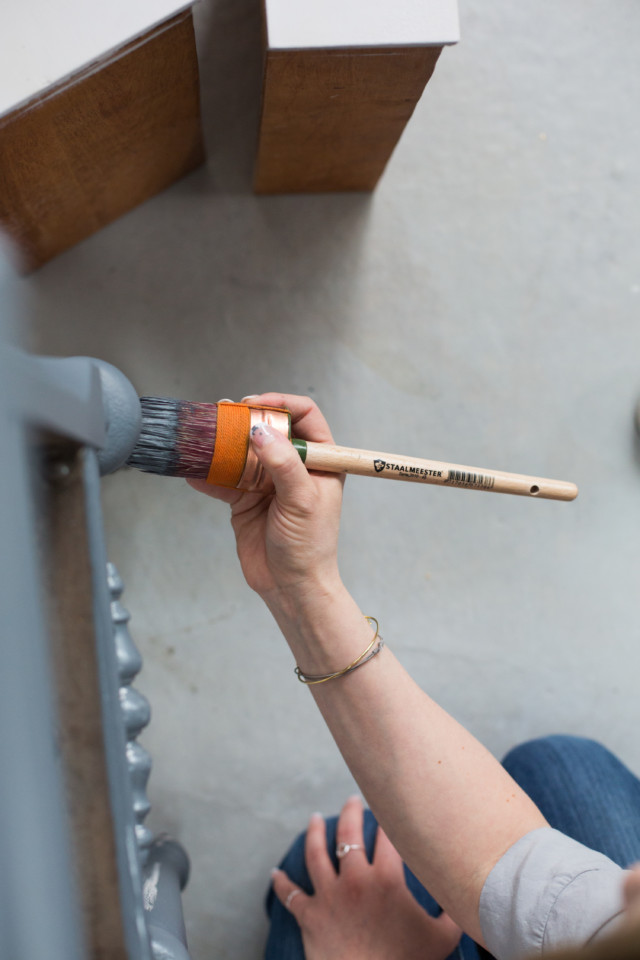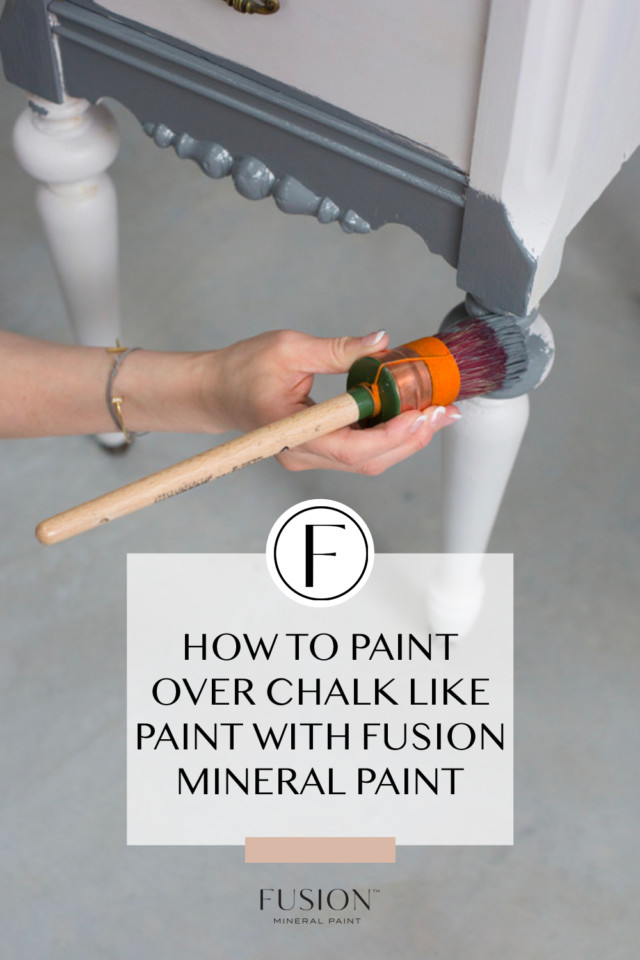It happens to all of us. We paint a piece of furniture and then down the line want a change. Maybe the color isn’t what you want any more, maybe the paint is not holding up like it used to or perhaps you discovered Fusion Mineral Paint and want to repaint it because you really appreciate how Fusion stays on furniture. We get asked a lot if it’s possible to use Fusion to paint over top of another brand of paint or chalk-like paint. The good news? Fusion can absolutely be painted over previously chalk-like painted surfaces and we are going to share the steps you need on how to paint over chalk-like paint with Fusion Mineral Paint.
How to paint over chalk-like paint with Fusion Mineral Paint
STEP 1
ASSESS THE WAX SITUATION
- The first thing you should do is check to see if the painted item has been waxed as you cannot paint over wax. In order to tell if there’s wax on top, drag your fingernail across the surface. Don’t *try* to scratch off the paint – that’s not what this is. This is to see if any residue comes off the surface. Imagine as much pressure as if you were scraping candle wax off of a surface.

- If anything comes up, it’s probably wax. In which case continue to Step 2. If there is no wax, continue to Step 3.

Fusion Mineral Paint Beeswax Distressing Block
STEP 2
REMOVING THE WAX
- Wax is one of the few things that Fusion, and all other paints just can’t stick to so you absolutely cannot paint over wax. It’s easy to get around that using mineral spirits. Mineral spirits refers to a clear (colorless) liquid that comes from petroleum. It is used as a solvent to dissolve wax, clean oil-based paint messes and thin oil-based paints. So when you use Mineral Spirits make sure to do so in a well-ventilated area. There are also options for odourless mineral spirits, but we still recommend using them in a ventilated area.
- Mineral spirits is the common name in USA and Canada, but there are other names for mineral spirits: white spirit (UK), mineral turpentine (AU/NZ), turpentine substitute, petroleum spirits, solvent naphtha (petroleum), Varsol (brand name), Stoddard solvent, or by the generic term “paint thinner”. If you want to find out more info, visit Wikipedia’s link and search for your geographical location.

Fusion Mineral Paint Clear wax
STEP 3
CLEANING YOUR SURFACE
- It’s important to prep your surface with TSP (if you’re in the UK, sugar soap can be used for the same effect) and wipe away as much dirt and grime as you can. Our TSP is amazing for ensuring all of your oil, grime, dirt and other residue is taken off before you paint. Please do not skip your prep as your projects are only as good as the surface preparations that you do.

STEP 4
PAINT!
- This is where you can go ahead and paint your piece with Fusion. But please note the following – if you yourself did not paint the piece the first time around, be aware that not everyone does proper prep. If any of the paint seems loose or is scratching off, give that area a more rigorous sand to actually try to remove the paint (use a lower grit than you would for scuff sand).

- If it does come off that’s still fine because it means you’re still preparing the surface to get the best Fusion adhesion possible and be sure that you’ll get the durability you want.



And that is it!
With Fusion Mineral Paint you can truly paint over and on anything including fabric, metal, glass, wood and previously painted items. We hope this helps ease your mind when tackling a previously chalk-like painted item. As an added bonus, Fusion Mineral Paint does not need a wax top coat, so you can easily repaint over Fusion at any time!
PIN IT FOR LATER!





